Zhivokost: growth, cultivation, properties and application
Comfrey (larkspur) is a medicinal herb that has been used in medicine and cosmetology for many centuries. Even Avicenna and Paracelsus described in their writings its properties; in those days, more than 100 diseases were treated with it. Today, the live bone is a powerful healing agent and is actively used to treat diseases of the musculoskeletal system.
Content
- Growth and collection rules
- Growing a larkspur on the site
- Chemical composition and properties
- Precautions for use
Growth and collection rules
Comfrey chooses peat soils in places where there is a lot of moisture, therefore it can most often be found on the banks of water bodies, in meadows in lowlands and forest edges. Outwardly, it is a lush plant, 100-120 cm high, a strong erect stem is covered with hairs, the leaves are large, have an oblong-lanceolate shape.
The flowers of this plant are purple or violet, they look a bit like bells. Plants with white or pinkish flowers are less common.
A characteristic feature of comfrey is a cucumber smell, which is especially noticeable if you knead the leaf in your hands.
It begins to bloom from the end of spring, and during the summer season one plant can produce up to 4000 seeds. Comfrey reproduces only by seeds, so they are harvested for growing larkspur in vegetable gardens and in personal plots.
The habitat in the wild is very wide: comfrey is found in Central Russia, Western Siberia, it grows in the Caucasus, Ukraine and even in North America.
For medicinal purposes, the root system of this plant is used, and a three-year or two-year black root is chosen.
The brownish tint of the root indicates that it has not taken in enough nutrients. The root pulp is white and crumbles well. One of the signs of a "correct" root is mucus secretion. It should feel good if you chew on a piece of pulp.
Seed collection begins at the beginning of summer, and the root is harvested mainly in the fall. Herbalists recommend collecting the roots on the full moon, as it is believed that it is at this time that they have the greatest strength. Rhizomes are cleaned of earth, cut into pieces, washed and dried in a well-ventilated place at a temperature of no more than 40 degrees.
Important! Larkspur belongs to low-poisonous plants, it requires careful handling.
The largest amount of poison is contained in the seeds, so after harvesting and working with them, be sure to wash your hands!
Growing a larkspur on the site
Comfrey is an undemanding plant, so it is not difficult to grow it. This is medicinal culture with 3-4 years of growth, calmly tolerating even rather serious temperature changes. Zhivokost does not like acidic soils; on all other types of soil, it grows quickly enough.
However, if you want to grow comfrey, you need to consider the following conditions:
- For better germination, spring seeds are subjected to stratification - aging in conditions close to natural. They should lie for 1.5-2 months at a temperature of 0-4 degrees with high humidity. Correct stratification will help most seeds germinate.
- Planting can be carried out not only in spring, but also in autumn, in this case stratification is not needed. It is advisable to completely clear the beds from weeds, especially from rhizomes.
- Larkspur is a fairly large plant, therefore, at least 60 cm should be left between the rows. At the same time, seedlings can begin to grow actively only in the second year: in the first year after planting, a rosette of leaves is formed, from next year the plant will begin to bloom and bear fruit.
The best place for comfrey is partial shade, as it does not like too bright sun.
- In nature, it often grows in the shade of trees, it can grow near fences and in lowlands near hills.
- The plant requires moderate watering, the soil should not dry out. At first, it is necessary to weed the weeds near the seedlings, as they can negatively affect the growth of the rhizome.
- Seeds are not easy to harvest, as they ripen unevenly and quickly crumble. Experienced gardeners carefully tie the fertilized inflorescence in a bag of gauze, then it is possible to save almost the entire crop.
- Comfrey is a hardy plant, so it does not require special care: it does not need to be covered for the winter and protected from early frosts. In the future, the livestock will have to be constantly mowed, since in subsequent years it will grow rapidly and can capture more space than it was allotted to.
Any gardener can grow comfrey, and later this plant can be used for a variety of purposes due to a special set of useful qualities.
Chemical composition and properties
In agriculture, comfrey is actively used for the production of fertilizersas green shoots contain phosphorus, nitrogen and potassium.
Larkspur infusions are used for watering tomatoes, beans, other garden crops. The dried green mass can be used as feed for rabbits, poultry and cattle. However, this is far from the only and not the main use case. This plant is a good honey plant, so it will be very appropriate in the area with hives. Another feature: comfrey contains rubber, and during the war the Germans even tried to grow it on an industrial scale.
Comfrey medicinal is a real natural storehouse of active substances, in small doses, giving a strong therapeutic effect.
First of all, these are the alkaloids cinoglossine and lisiocarpine. It also contains tannins, glizoids, various trace elements, such a complete set of which is difficult to find in other herbs. Due to this, it is most actively used for medical purposes.
Areas of use for comfrey:
- External use for wound healing.
- The roots of the larkspur contain allantoin, a substance that accelerates tissue regeneration. Moreover, natural allantoin is much more effective than its chemical counterpart. It helps with serious wounds and festering ulcers. For example, it is actively used to treat varicose veins.
- Comfrey has an antitumor effect, therefore it is used for sarcoma and other types of cancer.
- The bactericidal effect allows you to use it for angina, periodontal disease, all kinds of diseases of the oral cavity.
- The healing effect of comfrey has found application in the treatment of stomach ulcers, duodenal ulcers, bone tuberculosis, it helps to eliminate arthritis, arthrosis, relieves pain after amputation of limbs.
Precautions for use
A wide range of medicinal properties has made comfrey widely used in both official and traditional medicine. However, it lowers blood pressure, therefore it is contraindicated for hypotensive patients; manifestations of allergies and hypersensitivity to the components are also possible. Any drug made on the basis of larkspur should be used strictly in the prescribed doses.
Larkspur preparations are not prescribed for young children and pregnant women, the alkaloids contained in the seeds can negatively affect the development of the nervous system.
In other cases, the dosage should be discussed with a specialist before use. In folk medicine, tinctures and ointments made on the basis of dried and crushed comfrey roots are most actively used.
Another use is a decoction of the roots, which has an anti-inflammatory effect. With water infusion, you can rinse the throat with angina, with the help of decoctions, you can significantly speed up the healing of stomach ulcers.
Medicinal larkspur is a medicinal plant with an ancient history. Growing your own pantry of nutrients on the site is within the power of any gardener, since comfrey is very undemanding to growing conditions.



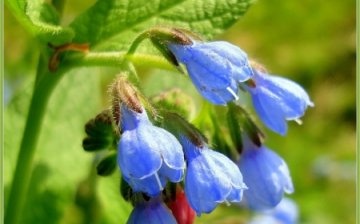
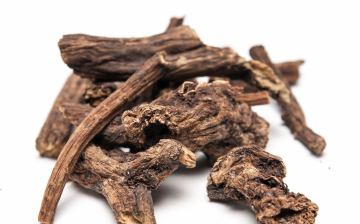
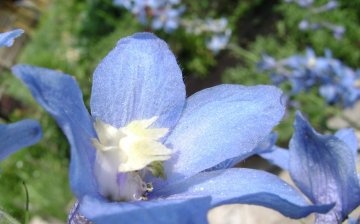
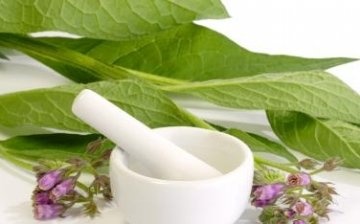
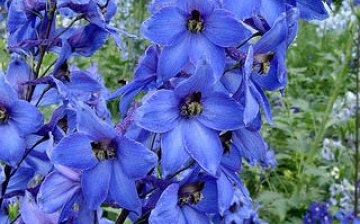





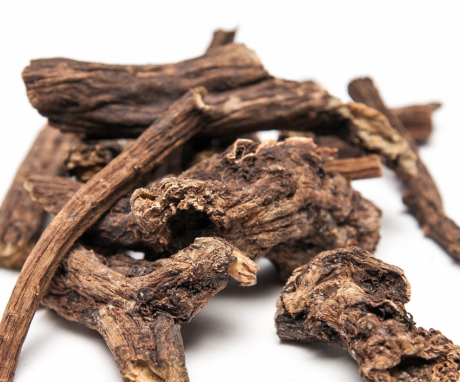
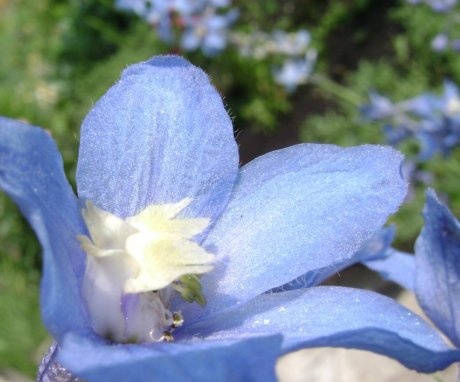
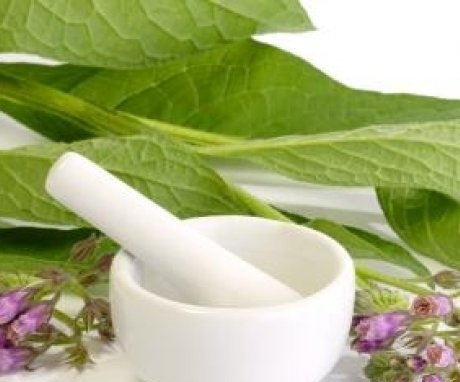
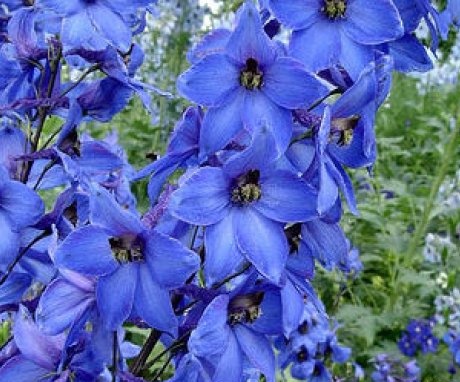
This flower grows in our flowerbed in the yard. I never thought it was a medicinal plant, I always considered it a kind of garden bells. And here, it turns out, there is so much benefit!